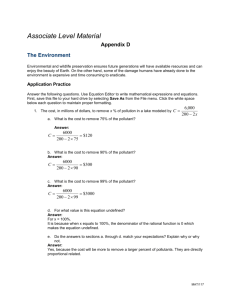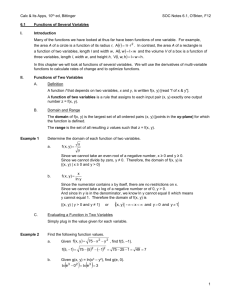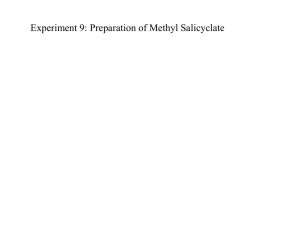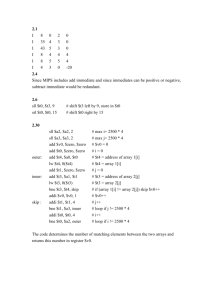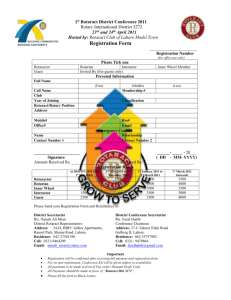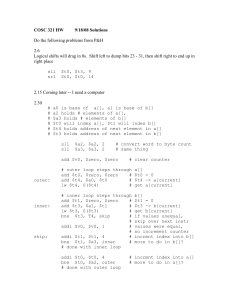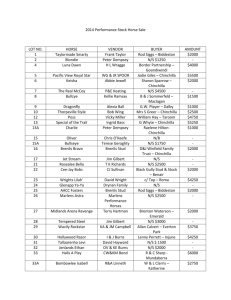Presentation
advertisement
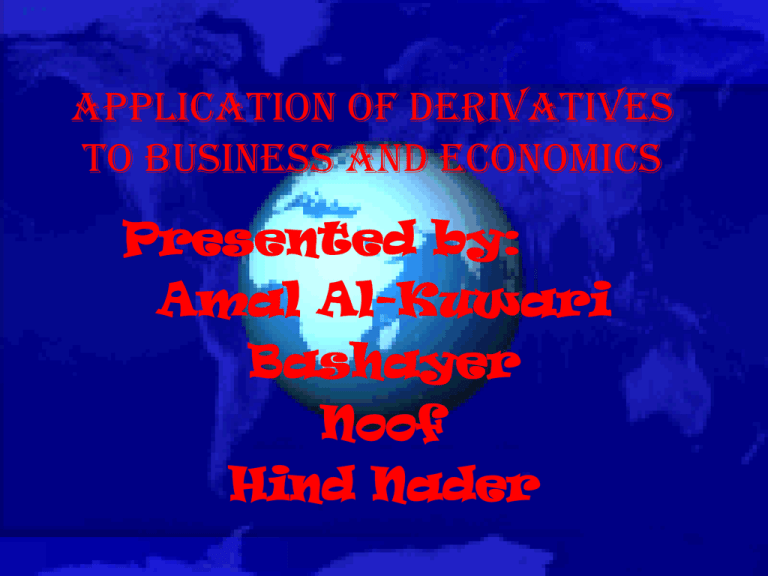
Application of derivatives to Business and economics Presented by: Amal Al-Kuwari Bashayer Noof Hind Nader Presentation content: • Introduction to Application of derivatives and it’s importance in the Business field • The demand function • The cost function • The revenue function • The profit function • Examples The demand function The demand function is the function that relates the price p(x) of a specific unit of a product to the number of units x produced. p(x) is also called the demand function. p(x)= p * x The cost Function The cost function is the function that relates the total cost C(x) of producing an x number of units of a product to that number x • C(x) = p(x) * x A general Example: A football match takes place in a stadium that can take 60,000 people. At first the tickets cost QR30 , it was expected that around 30,000 people would come , then when the tickets value were lowered to QR20 the audience attendance was expected to rise to 5000. Find the demand function assuming that this is a linear Function? Solution • First we find the equation of the straight line through the following points: (30000,30) ,(35000,20) • Secondly we find the slope: m = (20-30)/(35,000 - 30,000) = -10/5000 = -1/500 So the equation of this line is: P(x) - 20 =(-1/500).(x - 35,000) P(x)=-1/500.(x - 35,000)+20 So the demand function is : P(x)= -1/500x+70+20 = -1/500x+90 • Total cost example:If BMW company wants to produce 10 cars and each car cost 200,000 QR, find total cost gain from selling this amount of cars:- • • • • The solution:C(x) = P(x) * x C(x) = (10*200,000) * 200,000 C(x) = 40,000,000,000 QR The revenue function The revenue function which represented in R(x) is simply the product of the number of units produced x by the price p(x) of the unit. So the formula is: R(x)=x . p(x) Example • The demand equation of a certain product is p=6-1/2x dollars. • Find the revenue: R(x)= x.p =x(6-1/2x) =6x-1/2x2 The Profit Function The profit function is nothing but the revenue function minus the cost function So the formula is : P(x)= R(x)-C(x) →x.p(x)-C(x) Notice that : A maximum profit is reached when: 1. the first derivative of P(x) when P‘(x) is zero or doesn’t exist And 2. The second derivative of P(x) is always negative P″(x)<0 *when P‘(x)=0 this is the critical point, and since P″(x)<0 the parabola will be concave downward Another important notice is: Since P(x)= R(x)- C(x) Then a maximum profit can be reached when: R'(x)-C'(x)=0 and R″ (x)-C″(x)<0 Example • A factory that produces i-pods computed its demand, and costs and came to realize that the formulas are as follows: • p=100-0.01x • C(x)=50x+10000 Find: The number of units that should be produced for the factory to obtain maximum profit. The price of the unit. R(x)=x.p =x.(100-0.01) =100x -0.01x2 Now: P(x)=R(x)-C(x) =100x-0.01x2 –(50x+10000) =-0.01x2 + 50x-10000 Now the maximum point in the parabola will occur When P'(x)=0 ; P"(x)<0 P(x) =-0.01x2 + 50x-10000 P'(x)=-0.02x+50 → -0.02x+50=0 → -0.02x=-50 → x=2500 P'(2500)= -50+50=0 So the P'(X)=0 When x=2500 - Now we will find the second derivative: P″(x)= -0.02 P″(2500)= -0.02<0 So x=2500 is at a local maximum Graph y 80000 70000 60000 50000 40000 30000 20000 10000 x -500 500 1000 1500 2000 2500 3000 3500 4000 4500 Finally to find the price that is needed to be charged per unit we return to the demand function: P=100-0.01(2500) = 100-25= $75 Thank you
